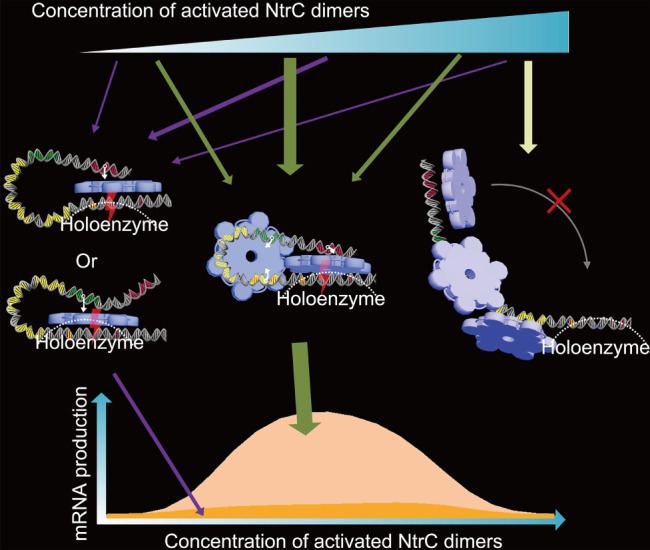Figure 3.

Molecular mechanisms for transcriptional regulation at the glnAp2 promoter. A transcriptional activator nitrogen regulatory protein C (NtrC) hexamer (shown in blue) formed at the remote or proximal enhancer (separately coloured in red and green; the connection between an enhancer and an NtrC hexamer is denoted by white arrows) is able to catalyse the polymerase holoenzyme (outlined by a dashed line) at the core promoter (the −24, −12, and +1 sites are denoted in orange, blue, and red, respectively). For a wide range of NtrC concentrations, these two modes only contribute to a small proportion of messenger RNAs (mRNAs) produced, since it takes a long time for the hexamers to find the holoenzyme. In the third mode, there exists a DNA bridging—an NtrC hexamer connects the proximal enhancer to a low‐affinity site (the three low‐affinity sites are coloured in yellow). This bridging facilitates the hexamer at the remote enhancer to catalyse multiple rounds of transcription initiation. At very high concentrations of NtrC dimers, NtrC oligomers are formed at the low‐affinity sites, rendering the DNA rigid and turning the gene off.
